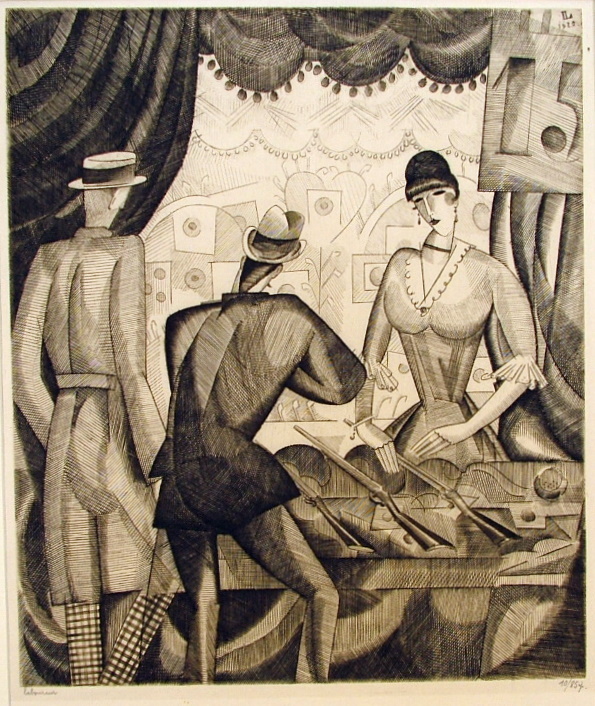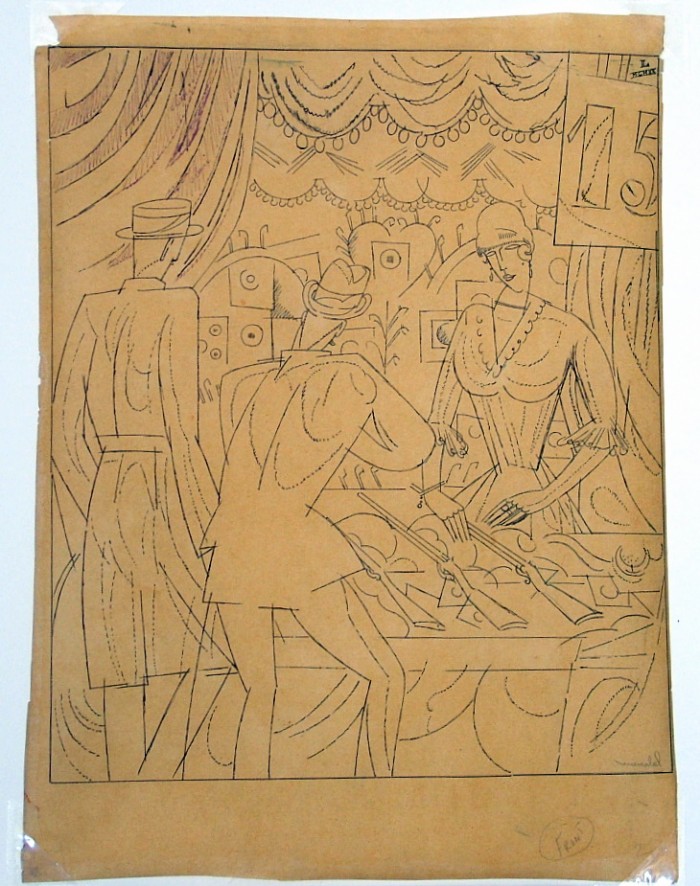Le Tir Forain, the print and the original drawing

Jean-Emile Laboureur (1877-1943), Le Tir Forain, engraving, 1920-21, signed in pencil lower left, titled lower left, and numbered 10//85 lower right, also annotated “imp.” [also with the monogram and date 1920 in the plate upper right]. Reference: Godefroy, Laboureur 191. Fourth state (of 4), total lifetime edition of 108 including all states. Posthumous impressions were taken in 1988, which are clearly stamped and identified. The plate has been cancelled. In very good condition, on an ivory laid paper with a double MBM watermark; the full sheet with wide margins (very slight toning, remains of prior hinging verso), 10 1/2 x 9, the sheet 15 1/2 x 10 3/4 inches.
Provenance:
Unidentified collector’s stamp verso ( ABS, not found in Lugt)
Purchased Exposition Galerie Marcel LeComte, 1974, to current owner.
A superb, rich impression of this splendid image, printed in an unusual dark brown ink.
Le Tir Forain was conceived in sketches and drawings in 1914, and some components of the image can be seen in one of the small woodcuts Laboureur created for a series of scenes depicting the troops in World War I. A major painting on the theme was not completed, and the engraving itself was done in 1920-21; the edition was printed in 1921. Le Tir Forain is one of the most famous of Laboureur’s images, and has been exhibited widely, serving as a theme for art shows and even as a decorative panel for the restaurant Boulestin.
Le Tir Forain demonstrates Laboureur’s remarkable adaptation of the cubist idiom; his engraving technique is a perfect way of achieving the angularity and freshness of line that his unique approach requires.
The general composition of Le Tir Forain was set out in the first state, which is of great interest in understanding the development of the print, and the intermediate states are of interest as well (and of course represent the plate in its early and more pristine condition). But in this case, the final state – in which the lines of the targets are filled in – is really a culmination of the developmental process; so in the case of Le Tir Forain the definitive fourth state represents the last word on what the artist was aiming at in this, one of his most appealing prints.
The drawing is in pencil on a very thin orange Japan paper, the same size as the engraving (10 1/2 x 9 inches), and then carefully re-traced by the artist in ink on the verso, so the verso is in the same direction as the print. It is signed in pencil. The verso is pictured. The condition is typical of a working drawing, i.e., not pristine – a paper loss upper left (outside of the image), a tear (now expertly repaired) where a pencil line was drawn too hard and sharp. Interestingly, in the upper left of the drawing the artist has drawn lines within the curtains in a purple ink.
(Note: a superb impression of the print, without the drawing, is also available; please inquire if interested)
